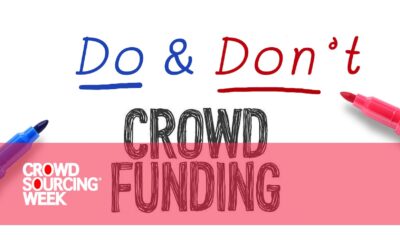Many a good innovation dies on the vine due to the lack of funds to make a prototype or take it to market. Crowdfunding is bridging this gap.
The main idea with reward and equity crowdfunding is that the innovators and their helpers set up a fund raise as a new project on a crowdfunding platform. The innovators, now promotors, invite others to assist them with funding their goal within a specified timeframe. Most projects have a funding goal that if reached makes their project worthwhile. Depending on whether the crowdfunding is donation, reward or equity based backers receive a gift, product, a good feeling or shares.
In a recent Indiegogo presentation I attended it became obvious to attendees that reward crowdfunding is not just about the money. Innovationis at the core of virtually all raisings. The presentation highlighted five reasons innovators may use a rewards crowdfunding platform to raise capital.
- To validate the market. The innovator wanted to open a “Cat Cafe” in London, needed £108,000 to do it, but was unsure if there was enough interest. The campaign raised £109,510 in two months which validated the idea of opening a cat cafe where visitors will have the opportunity to kick back and relax with a cup of tea and spend time in the soothing company of our purring feline friends.
- To test a market. Canary pitched itself as the first smart home security device for everyone. Canary is a single device that contains an HD video camera and multiple sensors that track everything from motion, temperature and air quality to vibration, sound, and activity to help keep you, your family and your home safe. Unsure of the market the promoters pre-sold their units in a crowdfunding campaign with an initial sales goal of $100,000. The market responded with orders for over $1.9 million. Over 7000 units were sold. A very successful market test.
- Get extra promotion. Sometimes your sales may be confined to the market as you know it and need a wider audience. Take the Robot Dragonfly for example. The dragonfly was developed at the Georgia Institute of Technology, as a joint effort between 20+ researchers, PhDs, professors and students from multiple universities across the world. Through their crowdfunding project they raised over $1.1 million and gained 3200 customers.
- To capture data. The Scanadu Scout is a personal scanner packed with sensors designed to read your vital signs and send them wirelessly to your smartphone in a few seconds, any time, anywhere. The device promotors used crowdfunding to target the consumer market but the backers they attracted, and the data generated by these backers, is certain to capture the attention and significant budgets of the medical industry around the world.
- Money and matching money. Sometimes it is about the money. This was the case when Tesla’s final laboratory came up for sale. A non-profit wanted to buy the property and turn it into a Nikola Tesla Museum. The property was listed at $1.6 million, and this non-profit would receive a matching grant from New York State of up to $850k if it raised the money. 33,253 contributed over $1.3 million and the building was saved.
Equity crowdfunding and innovations also go well together. On the ASSOB platform hundreds of products and services have reached the world due to raises on ASSOB’s proven capital raising platform. The examples that follow raised a total of $16.8 million include plastic wine barrels, pressurised fruit juice, dental plans, a self managed superannuation portal, open source network management software, proximity advertising, childrens’ designer furniture, encryption software, mining tenements, welding technology and an on-line photography marketing site.
There are now thousands of examples world-wide where innovation and crowdfunding go hand in hand.
And … this is just the beginning.



0 Comments